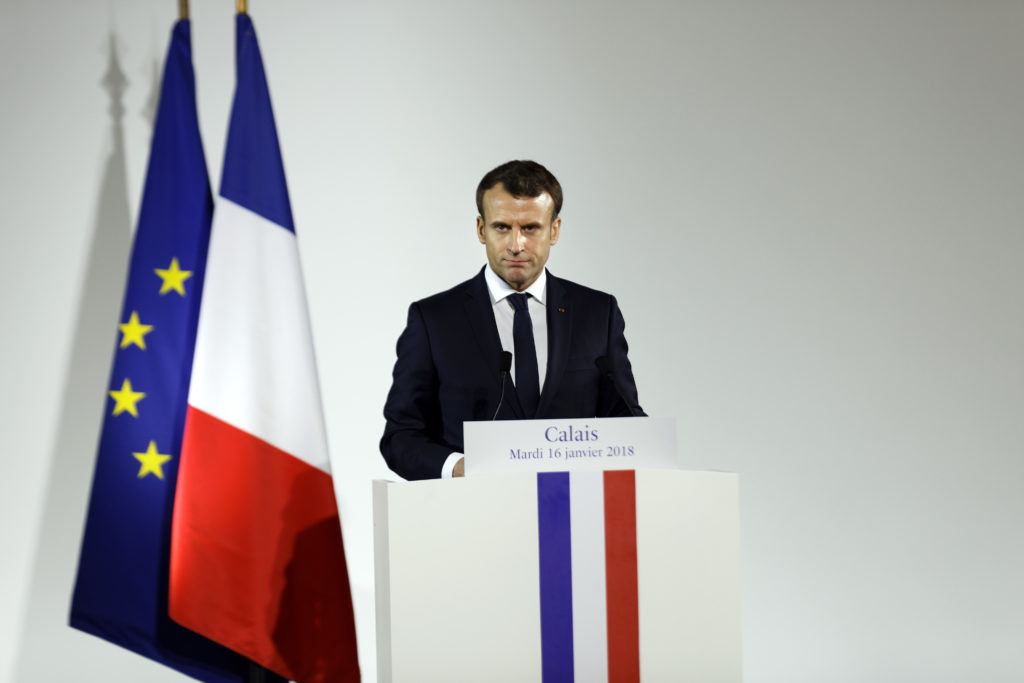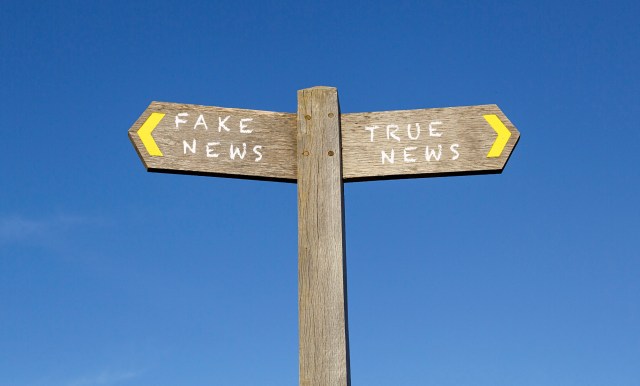Credit: Getty

Whatever you think about it, ‘fake news’ is one of the terms of our era. Last year Collins gave it the accolade of ‘word of the year’. The UK Parliament’s Culture, Media and Sports Committee is carrying out an investigation into the phenomenon. The US President this week announced the winners of his unilaterally held ‘fake news awards’.[1. The Highly Anticipated 2017 Fake News Awards] The French President, Emmanuel Macron, has a number of times promised not merely to battle fake news but to actually ban it, especially during elections. Battling fake news would appear to be an attractive and enobling place to be.
To be opposed to ‘fake news’ is to award yourself not only the role of arbiter of what is true and what is fake, but the position of someone who is themselves putting out (or giving an imprimatur to) true news. It is a position that is enormously flattering. When the New York Times or CNN present themselves as opposing ‘fake news’ they suggest not only that they can identify what is false but that what they are putting out themselves is truthful. With digital platforms snapping at the old media’s heels, this is a particularly propitious meme for such media to push. The old media can suggest that while they hold the flame of truth it is the upstart new media who have let all the sluices up and allowed the whole pitch to be spoiled. This attitude is not just morally advantageous for them but also potentially financially advantageous. What a joy it is when these two things just happen to coincide.
But if everyone in politics and the media does not wish to die in a great circular firing squad, all clinging to their own ideas of what is fake or not, it might be worth trying to agree on some standards.

The first is a recognition that there are at least three broad categories of what is now called ‘fake news.’ These are
- News that is wholly made up.
- News that is partially made up.
- News that may be true but which fits a particular ideological slant.
Of course within these different varieties of fake news no media company or individual is necessarily guilty of consistently putting out just one particular variety. Certainly there are numerous websites that put out the first version. They tell you the ‘truth’ about the assassination of JFK and often go on to promise in pushed adverts that assure you that you can earn a fortune by working from home or promise to grow parts of the reader’s anatomy. These sites push the first variety of fake news but the mainstream media can also on occasion push the first variety. They get a story wrong or report a story that is based on nothing.
More often with the old media, they print or report stories which, while not entirely made up, are substantially inaccurate. And as Tim Montgomerie has pointed out, this type of fake news is not confined to the media. It has polluted purportedly ‘factual’ television dramas.
For the print and broadcast news media these stories – inaccuracies in otherwise accurate stories, or stories which contain truth and also demonstrable error, are their Achilles heel. Even today when a mainstream journal is found to have wholly or partially made up a story, or aspects of a story, there is a severe reputational price to pay as an institution. The New Republic did not benefit from the Stephen Glass affair, any more than the New York Times benefited from having the proven fabulist Jayson Blair among their reporters.
However, far more common – and what many people seem to mean when they say ‘fake news’ – is the third definition. Not so much making up stories, but slanting the news agenda by reporting something things in a particular way and reporting others in a different way or in no way at all. President Trump identifies as ‘fake news’ not only stories that are inaccurate or made up, but stories which focus on something he does not think the media should focus on and failing to focus on something he believes they should focus on. Of course it is not really accurate to call this ‘fake news’, but it is proving a helpful new way to pour scorn on those who editorialise in a direction we – whatever our views – simply do not like.
There was a fine demonstration of this over the past week. In Canada a young girl was reported to have had her headscarf (or hijab) cut by a stranger. The story was taken up by news media around the world. The BBC ran it with the headline: “Toronto police investigate ‘scissor attack’ on girl’s hijab.” The story went on, ‘Canadian police are investigating a possible hate crime after a man tried to cut the hijab off a young girl. Khawlah Noman, 11, was walking to school with her brother in Toronto when they said a man came up behind her with scissors. Miss Noman said she screamed and her assailant ran, only to return, pull off her hood and cut her hijab.’[2. BBC – Toronto police investigate ‘scissor attack’ on girl’s hijab] Canadian Prime Minister Justin Trudeau was among those to leap onto the story. ‘”My heart goes out to the young girl who was attacked, seemingly for her religion’ he said. ‘I can’t imagine how afraid she must have been. I want her and her family and her friends and community to know that that is not what Canada is.’ [3. BBC – Toronto police investigate ‘scissor attack’ on girl’s hijab]
Not only was this “not what Canada is” it also turned out not to be true. Within days it transpired that – in the words of the Canadian police: “After a detailed investigation, police have determined that the events described in the original news release did not happen.” [4. BBC – Toronto police investigate ‘scissor attack’ on girl’s hijab] The more reputable news sources reported this, but few gave it the prominence they had given the original story. The story itself turned out to be the first variety of fake news. But the spin it received – and the prominence it was given – was also a demonstration of the third type.
By comparison, very close to the time that this non-attack on a girl’s headscarf was spread across the world’s media, a Jewish teenager in Paris had her face slashed by an unknown assailant. The attack (on 13th January) which is believed to be an anti-Semitic attack, occurred in the Paris suburb of Sarcelles. So far as I can discern this story has only been reported in the Jewish and Israeli press.[5. The Times of Israel – Girls face cut near Paris in suspected anti-Semitic] It has not been reported by mainstream media, and has not gathered even a modicum of the coverage afforded to the non-existent hijab cut.
This is the sort of thing that irritates people – from every imaginable direction. And it is the perfect meeting place of the first type of fake news with the third. The editorialising of a non-event and the ignoring of a real event. We will be hearing a lot more of ‘fake news’ in the years ahead. It is to the benefit of too many people for it to disappear swiftly. But to avoid the circle-shoot we should at least consider ways in which to diminish the phenomenon. I can think of none which would be more effective than that the mainstream media recognise (and admit to) those occasions when they have engaged in the very practices which they claim to abhor.










Join the discussion
Join like minded readers that support our journalism by becoming a paid subscriber
To join the discussion in the comments, become a paid subscriber.
Join like minded readers that support our journalism, read unlimited articles and enjoy other subscriber-only benefits.
Subscribe